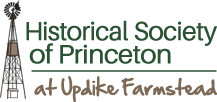COMMUNITY-WIDE COLLABORATION ON THE THEME OF MIGRATIONS WILL FEATURE EXHIBITIONS, PERFORMANCES, LECTURES AND MORE
Over thirty organizations in and around Princeton will offer programs from
February through May 2018
PRINCETON, NJ—Over thirty regional nonprofit organizations, as well as several Princeton University departments and programs, will investigate the far-reaching theme of migrations from February through May 2018. A truly varied group of participating organizations, from the Princeton University Art Museum, The Stony Brook-Millstone Watershed Association, and McCarter Theatre to the Witherspoon-Jackson Historical and Cultural Society, Womanspace, and the Princeton Public Library, will explore the theme, each in relation to its individual mission and programmatic focus.
A media event about the Princeton Migrations community-wide collaboration will be held on Monday, January 22, at 11 a.m. in the News Room at the Princeton Public Library. The event will feature brief remarks by Brett Bonfield, Executive Director of the Princeton Public Library, and James Steward, Nancy A. Nasher–David J. Haemisegger, Class of 1976, Director of the Princeton University Art Museum, followed by an opportunity to interview representatives from over 15 of the participating organizations. Please RSVP for the event by emailing Erin Firestone at efirestone@princeton.edu.
“We shaped the theme of migrations in order to invite as many nonprofit organizations as possible to participate,” notes Princeton University Art Museum director James Steward, who initiated the idea. “Immigration and its real-world consequences are so much in our minds that we wanted to open a conversation that includes the migrations of animals and even of ideas, and in doing so to increase the resonance across ideas and organizations.”
Migrations may include seasonal migrations of workers in the increasingly global economy of labor; the historical movements of peoples in response to famine, war or economic crisis and change, such as the Great Migration of African Americans from south to north in the mid-20th century; the seasonal migrations of various species, such as the shad that have been blocked from migrating up New Jersey’s rivers since the eighteenth century; or the movement of ideas along the Silk Road of the ancient east.
“Migrations are part of the fabric of this place,” said Izzy Kasdin, Executive Director of the Historical Society of Princeton. “Whether it’s the origins of Princeton as a carriage outpost for people moving between major colonial metropolises, as a refuge for persecuted scholars or as a juncture of natural and manmade waterways, in so many ways migration and change is integral to Princeton’s heritage and identity.”
The many programs and exhibitions related to the Migrations community initiative may be found here: https://princetonmigrations.org/.
